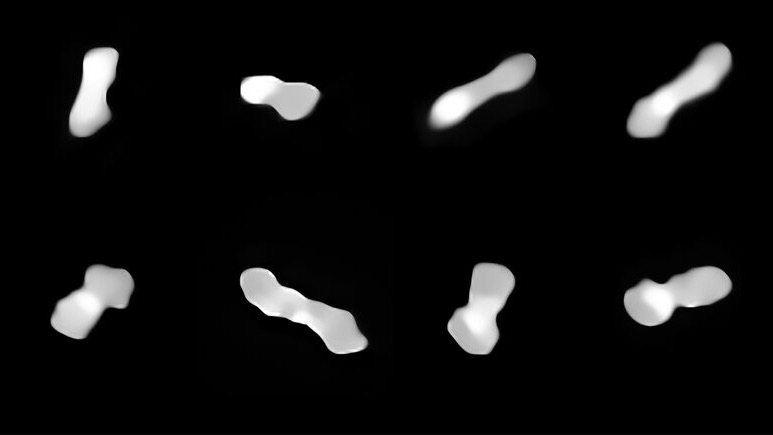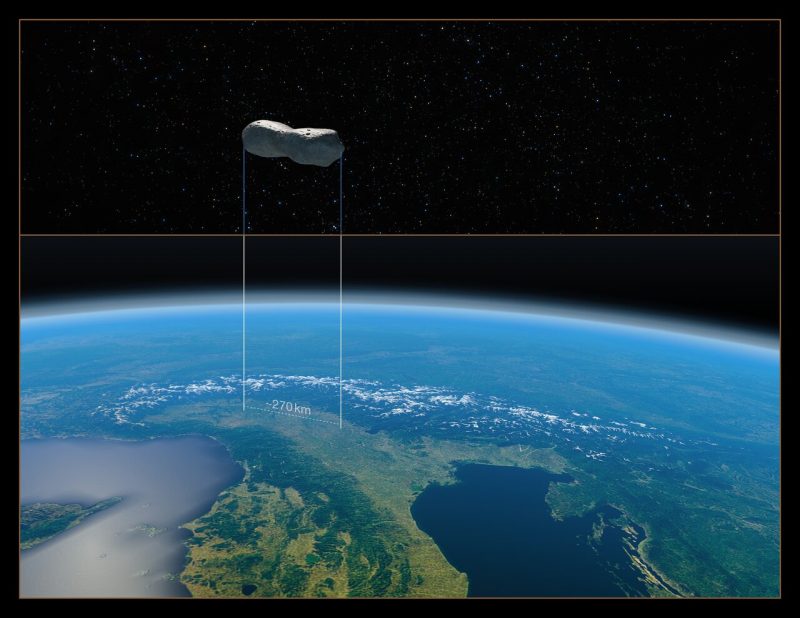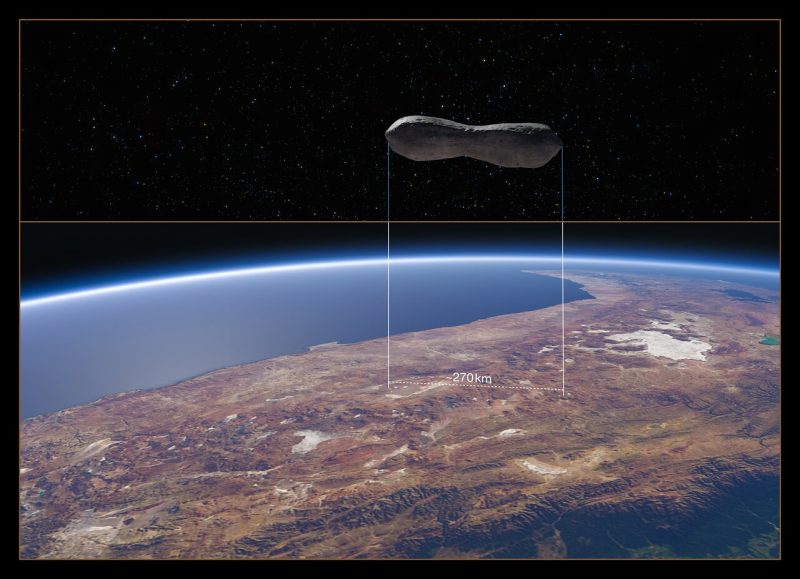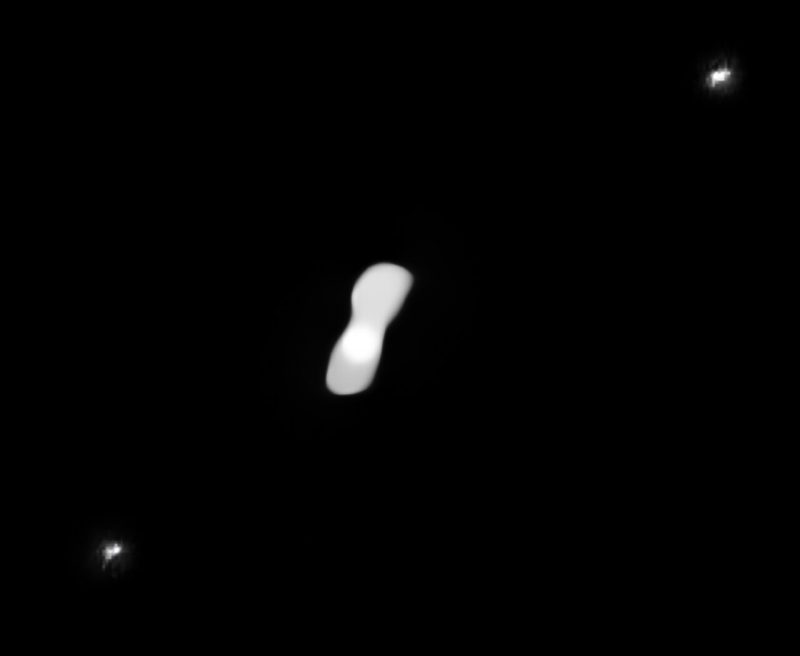
216 Kleopatra – aka the dog-bone asteroid – might paws-ibly be the cutest object in the asteroid belt between Mars and Jupiter. It was one of the earliest asteroids to be discovered, in 1880. But astronomers labeled it as a dog-bone 20 years ago, when radar observations at Arecibo Observatory revealed its two lobes and thick “neck.” Astronomer Franck Marchis of the SETI Institute in Mountain View, California, led the team that captured the sharpest and most detailed images yet of Kleopatra (above).
The European Southern Observatory released the images this week (September 9, 2021) and said the new observations caused astronomers to realize this fetching asteroid is a little ruff around the edges. It may be nothing more than a big rubble pile that’s lost some of its pebbles, but gained two moons.
The astronomers published two new studies of Kleopatra, one on May 19 and the other on August 16, in the peer-reviewed journal Astronomy and Astrophysics.
Scientists used ESO’s Very Large Telescope to view Kleopatra, which, at its nearest, comes within 125 million miles (200 million km) of Earth. This is like trying to see a golf ball from 25 miles (40 km) away.
Dog-bone asteroid tumbles through space
ESO’s Very Large Telescope took the images shown here between 2017 and 2019. The range of images enables astronomers to see the asteroid as it tumbles through space, revealing different angles and enabling them to create 3D models of Kleopatra. They found one of the lobes is larger than the other. They also found that the total length of the asteroid is 167 miles (270 km). For size comparison, the scientists created images of what Kleopatra would look like hovering over Earth above Italy and Chile.
Marchis, the team leader of one of the studies, described the value of studying an unusual object such as Kleopatra:
Kleopatra is truly a unique body in our solar system. Science makes a lot of progress thanks to the study of weird outliers. I think Kleopatra is one of those, and understanding this complex, multiple asteroid system can help us learn more about our solar system.


Kleopatra and its moons
Kleopatra, named for the Egyptian queen, is not alone as it orbits the sun out in the asteroid belt. Two moons orbit around it: AlexHelios and CleoSelene, which scientists named for the queen’s real-life fraternal twins.
Miroslav Brož of Charles University in Prague, Czech Republic, was the lead author of the other study on Kleopatra. His team used the new observations to find the correct orbits of the moons. Previous studies produced orbits that didn’t jibe with the observations. Brož said:
This had to be resolved, because if the moons’ orbits were wrong, everything was wrong, including the mass of Kleopatra.
His team resolved the issue by using the new observations and modeling to discover Kleopatra’s gravitational influence on the movement of the moons. Once the satellites’ orbits were defined, the astronomers could calculate Kleopatra’s mass. They found that its mass was 35% lower than previous estimates. With the volume and mass estimates, the scientists could then estimate the density, which was also lower than previously believed.
Scientists now think that Kleopatra isn’t much more than a rubble pile, formed from material that underwent a giant impact. They realized that if the asteroid rotated much faster, it would begin to crumble apart. In fact, Marchis’ team believes this is how Kleopatra’s moons were born, from pieces of the asteroid that were ripped away in small impacts. The stripped pebbles eventually coalesced to form the two moons.

Future observations
The current observations, made with ESO’s Very Large Telescope, used advance adaptive optics systems. These systems correct for the effect of Earth’s atmosphere, which would otherwise distort and blur the resulting image.
The scientists are excited about the prospects of ESO’s newest observatory, the Extremely Large Telescope, planned for 2027. As the “World’s Biggest Eye on the Sky,” it will be ideal for imaging Kleopatra and other challenging objects. As Marchis said:
I can’t wait to point the ELT at Kleopatra to see if there are more moons and refine their orbits to detect small changes.
Bottom line: Kleopatra, the dog-bone asteroid, reveals its size and composition in new images released by ESO.
Source: An advanced multipole model for (216) Kleopatra triple system
Source: (216) Kleopatra, a low density critically rotating M-type asteroid











